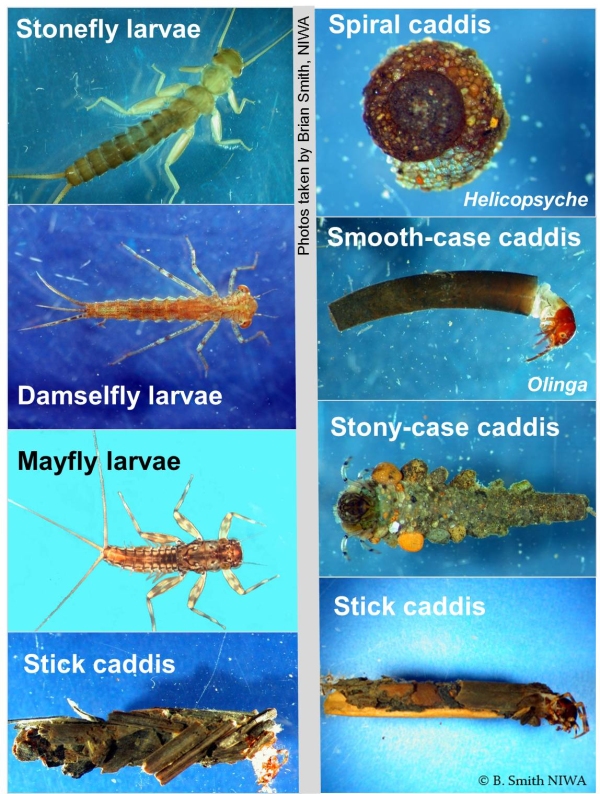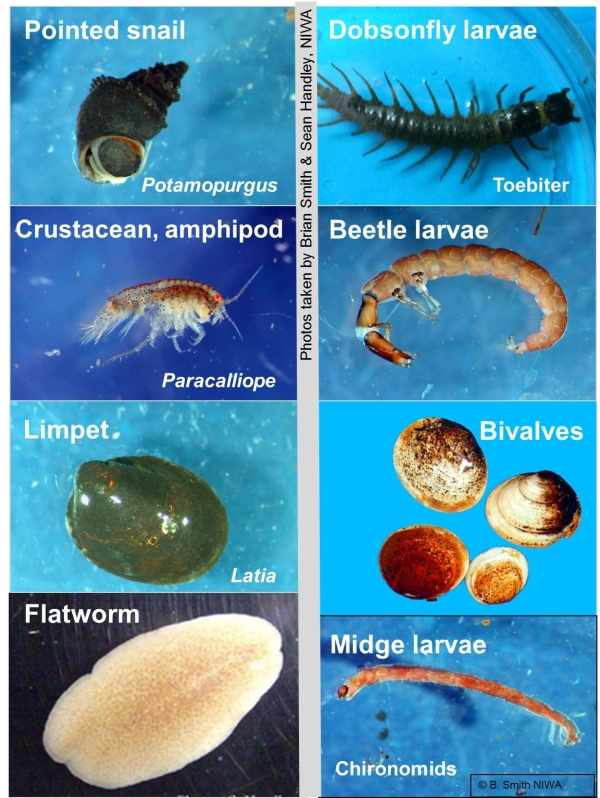Small native fish eat a range of benthic invertebrates in streams. The larvae of mayflies and caddisflies are the most important food species, with chironomids being important for juvenile fish and in streams where all other prey are scarce.
Snails and other small invertebrates are less important for small fish whereas larger prey species (crayfish, shrimps and dragonfly larvae) are only utilised by larger fish.
Mayflies and cadddisflies do best where the substrate is hard (e.g., rocks, wood etc.) and where there is an adequate flow of water. Chironomids do best in sandy/silty substrates. Water velocity is not important to them.
To determine whether food is plentiful, sample the substrate. Turn over stones or examine wood debris on the bottom to see if mayfly or caddisfly larvae are common. Sieve some of the soft sediment to see if chironomid larvae are common. Most invertebrates are more common in summer months and are naturally scarce in the colder winter months.
If mayfly and caddis larvae are scarce despite the presence of good substrate, check to see if water velocities are too low (< 0.3 m s-1). If chironomid larvae are also scarce, then invertebrates may have been killed by poor water quality (i.e., low oxygen levels, low pH, high ammonia, or a spill of toxic chemicals). Ask your regional council to test the water to see if this is a possibility.
If water quality is not a problem, then ensure that the substrate is not silted (i.e. interstices filled). If physical habitat is poor, then stream modification (e.g., substrate manipulation, channel constriction) may be required to provide this. If both water quality and physical habitat are adequate, then food may be limiting. Many mayfly and caddisfly larvae depend on leaf litter as a food base in well-shaded streams, and this may be lacking.
Further information on restoring invertebrates to streams can be found on our page Stream restoration for aquatic invertebrates.


